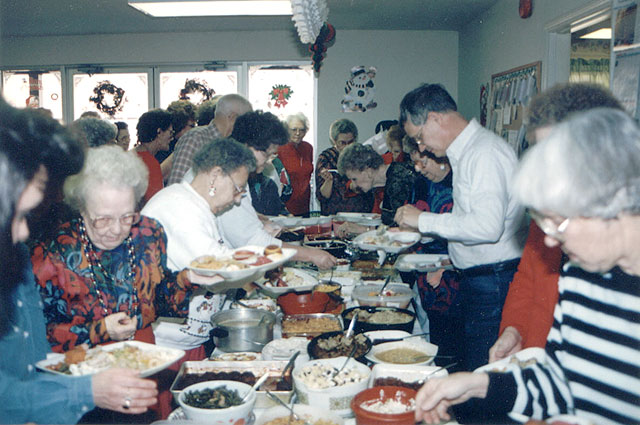In 1184, city leaders in Toulouse, France, introduced some of the first documented measures to oversee the sale of meat: profit for butchers was limited to eight per cent; the partnership between two butchers was forbidden; and, selling the meat of sick animals was forbidden unless the buyer was warned.
 By 1394, the Toulouse charter on butchering contained 60 articles, 19 of which were devoted to health and safety.
By 1394, the Toulouse charter on butchering contained 60 articles, 19 of which were devoted to health and safety.
As outlined by Madeleine Ferrières, a professor of social history at the University of Avignon, in her 2002 book, Sacred Cow, Mad Cow: A History of Food Fears, the goal of regulations at butcher shops — the forerunners of today’s slaughterhouse — was to safeguard consumers and increase tax revenues. Animals from the surrounding countryside were consolidated at a single spot — the evolving slaughterhouse, originally inside city walls — so taxes could be more easily gathered, and so animals could be physically examined for signs of disease.
It’s no different today: slaughterhouses are common collection points to examine animals for signs of disease and to collect various levies. And like medieval times, one of the most basic rules is animals that cannot walk are forbidden from entering (the slaughterhouse or city).
So when Hallmark/Westland Meat Packing Co., a Chino, Calif., establishment that is (was) the second-largest provider of beef to the U.S. school lunch program was caught breaking the rules, the U.S. Department of Agriculture on Sunday announced the firm was voluntarily recalling two-years worth of production, or approximately 143 million pounds of raw and frozen beef products. USDA had determined the meat to be unfit for human food because the cattle did not receive complete and proper inspection.
But it wasn’t the inspectors and veterinarians who work for USDA, those who are paid to be present in the slaughterhouse to inspect and verify compliance, who busted the case. It was an undercover employee of the Humane Society of the United States who obtained footage which prompted USDA to act (the original video is available at:
https://community.hsus.org/campaign/CA_2008_investigation?qp_source=gaba89).
The slaughterhouse was found using a variety of distasteful techniques such as electric prods, nudging with a forklift and waterboarding, to get non-ambulatory animals to walk one last time, and just in time for the USDA-type to notice.
 A non-ambulatory animal is also called a downer.
A non-ambulatory animal is also called a downer.
Federal regulations forbid downed cattle from entering the food supply because they may have higher levels of E. coli, salmonella or mad cow disease.
A 2004 review of meat inspection in Canada found that cattle become non-ambulatory at all ages and for a variety of reasons, and that banning these animals from the food chain could encourage illegal slaughter and the sale of uninspected meat processed under unhygienic conditions.
"However," the report stated, "most downer animals are dairy cows that are at the end of their productive lives and are being sent for slaughter to salvage what little value remains. The quality of their meat is low and although it cannot be said that this meat is unsafe, there is a heightened risk."
That’s why they’re supposed to be kept out of the food supply.
In the Middle Ages, violation of regulations ranged from fines to flogging to banishment.
Hallmark/Westland Meat Packing Co. will be flogged in the media and the two-year recall should effectively banish the company.
But unlike 12th century France, USDA has access to the same video technology that a single undercover worker was able to use to bring down a large corporation. Producers and processors who say their food is safe should be able to prove it. Producers and processors who say they treat animals humanely should be able to prove it.


 By 1394, the Toulouse charter on butchering contained 60 articles, 19 of which were devoted to health and safety.
By 1394, the Toulouse charter on butchering contained 60 articles, 19 of which were devoted to health and safety. A non-ambulatory animal is also called a downer.
A non-ambulatory animal is also called a downer.  The editorial says that in recent years as well, community groups and Legions have been under the gun on matters of food preparation. One bad batch that causes food poisoning can bring the wrath of officialdom as well as public opinion down on a group.
The editorial says that in recent years as well, community groups and Legions have been under the gun on matters of food preparation. One bad batch that causes food poisoning can bring the wrath of officialdom as well as public opinion down on a group. The N.Y. Times reports that in preparing to take a delegation of more than 600 athletes to the Summer Games in Beijing this year, the United States Olympic Committee faces numerous food issues. In recent years, some foods in China have been found to be tainted with insecticides and illegal veterinary drugs, and the standards applied to meat there are lower than those in the United States, raising fears of food-borne illnesses.
The N.Y. Times reports that in preparing to take a delegation of more than 600 athletes to the Summer Games in Beijing this year, the United States Olympic Committee faces numerous food issues. In recent years, some foods in China have been found to be tainted with insecticides and illegal veterinary drugs, and the standards applied to meat there are lower than those in the United States, raising fears of food-borne illnesses. "Enough to feed a family of eight. We had it tested and it was so full of steroids that we never could have given it to athletes. They all would have tested positive.”
"Enough to feed a family of eight. We had it tested and it was so full of steroids that we never could have given it to athletes. They all would have tested positive.”
 The rats are drowned and sold uncooked or ready to eat, with happy customers purchasing rat meat for as much as 150 baht ($4.82; £2.30) a kilogram.
The rats are drowned and sold uncooked or ready to eat, with happy customers purchasing rat meat for as much as 150 baht ($4.82; £2.30) a kilogram..jpeg) There’s nothing glorious about salmonella.
There’s nothing glorious about salmonella..jpg)
 The U.S. implemented a ban on haggis from Scotland in 1989 amidst the bovine spongiform encephalopathy [mad cow] scare because the dish contains offal ingredients such as sheep lungs. Sheep can suffer from scrapie, which is in the same family of diseases as BSE.
The U.S. implemented a ban on haggis from Scotland in 1989 amidst the bovine spongiform encephalopathy [mad cow] scare because the dish contains offal ingredients such as sheep lungs. Sheep can suffer from scrapie, which is in the same family of diseases as BSE.
 Specifically, the toilet on the sidewalk of a busy Parisian street.
Specifically, the toilet on the sidewalk of a busy Parisian street. But there is lots of evidence that people get sick from fresh produce —
But there is lots of evidence that people get sick from fresh produce —